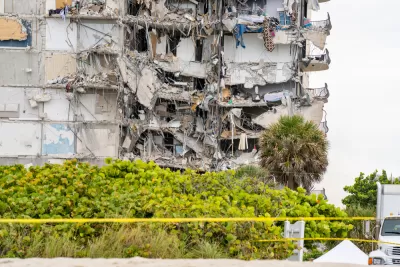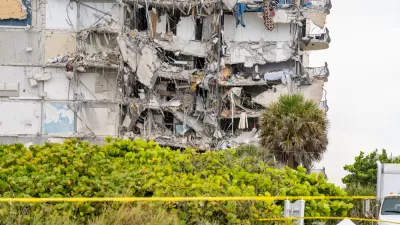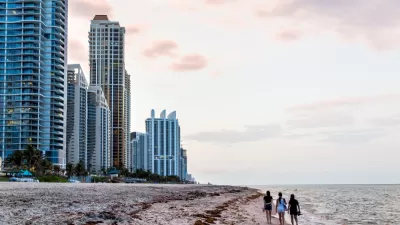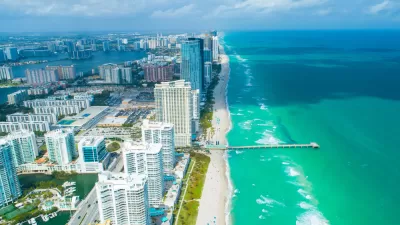The safety of Champlain Towers South was compromised to make more room for parking, according to an investigation by the Miami Herald in consultation with four engineers and a general contractor.

Sarah Blaskey, Aaron Leibowitz, and Bern Cornack report the bombshell findings of a new study into the building conditions that caused the collapse of the Champlain Towers in Surfside, Florida in July.
Champlain Towers South was poorly designed, even for the 1970s when the plans were originally drawn and codes were less rigorous, according to an analysis of building plans, applicable building codes and photos of the debris performed by the Miami Herald in consultation with four engineers and a general contractor.
Most of the column designs were too narrow to safely accommodate the amount of reinforcing steel called for in the plans at the basement and ground floors, especially at the critical areas where the columns connected to the slab, engineers’ calculations based on the building code requirements at the time show.
The column-to-slab connection would have been stronger if the building had been constructed to code, and the narrow columns were built to allow more space for parking, according to the experts consulted by the Herald.
The deck — which sat on skinny columns to maximize parking space below — was barely designed with enough strength to support a pool party, much less the layers of pavers and standing water that loaded it down over the decades, calculations by engineers using figures from the 1970s show.
The article includes more detail on the construction deficiencies and failures to build to code discovered in the analysis. Some of the findings of the report, especially regarding the column-to-slab connection, echo the findings of earlier photo analysis by The New York Times.
FULL STORY: Surfside tower was flawed from day one. Designs violated the code, likely worsened collapse

Alabama: Trump Terminates Settlements for Black Communities Harmed By Raw Sewage
Trump deemed the landmark civil rights agreement “illegal DEI and environmental justice policy.”

Study: Maui’s Plan to Convert Vacation Rentals to Long-Term Housing Could Cause Nearly $1 Billion Economic Loss
The plan would reduce visitor accommodation by 25% resulting in 1,900 jobs lost.

Planetizen Federal Action Tracker
A weekly monitor of how Trump’s orders and actions are impacting planners and planning in America.

Wind Energy on the Rise Despite Federal Policy Reversal
The Trump administration is revoking federal support for renewable energy, but demand for new projects continues unabated.

Passengers Flock to Caltrain After Electrification
The new electric trains are running faster and more reliably, leading to strong ridership growth on the Bay Area rail system.

Texas Churches Rally Behind ‘Yes in God’s Back Yard’ Legislation
Religious leaders want the state to reduce zoning regulations to streamline leasing church-owned land to housing developers.
Urban Design for Planners 1: Software Tools
This six-course series explores essential urban design concepts using open source software and equips planners with the tools they need to participate fully in the urban design process.
Planning for Universal Design
Learn the tools for implementing Universal Design in planning regulations.
Caltrans
Smith Gee Studio
Institute for Housing and Urban Development Studies (IHS)
City of Grandview
Harvard GSD Executive Education
Toledo-Lucas County Plan Commissions
Salt Lake City
NYU Wagner Graduate School of Public Service





























